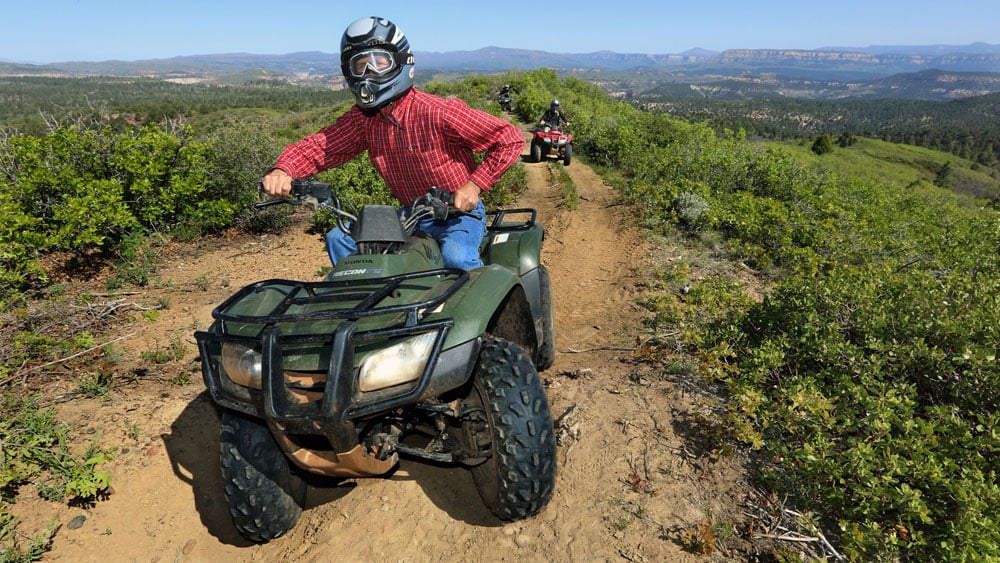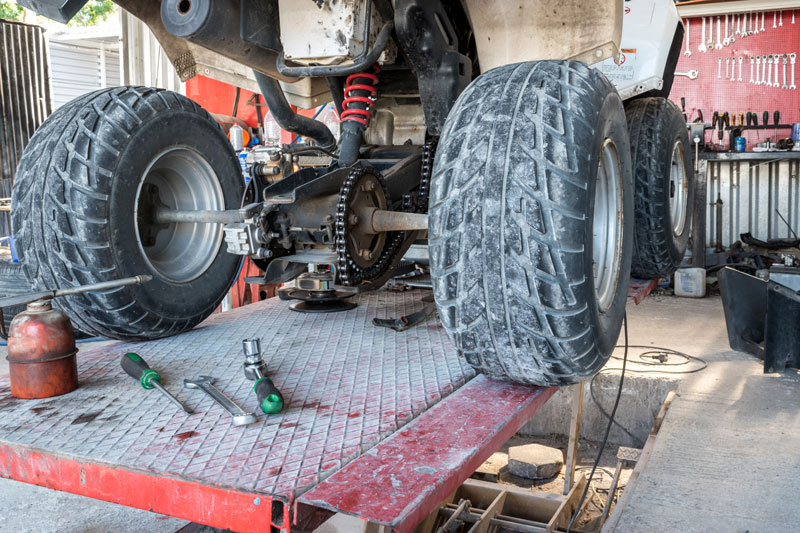Rev Up Your Experience: Revealing the very best ATV Tracks Near You
Wiki Article
ATV Riding Methods: Mastering the Art of Off-Roading

Body Positioning
To effectively browse through challenging off-road terrain, it is vital for ATV motorcyclists to continually preserve correct body positioning. Maintaining the proper body setting while riding an ATV not only enhances control and security however additionally ensures the motorcyclist's safety. By embracing the correct body positioning strategies, riders can successfully distribute their weight, boost their equilibrium, and lessen the danger of crashes or injuries.Putting the feet on the foot pegs enables the biker to preserve security and control over the ATV. The biker's knees must be somewhat bent, offering a slight suspension to soak up shocks and maintain equilibrium.
Furthermore, the biker's eyes must constantly be concentrated ahead, checking the surface and anticipating any type of obstacles or adjustments in the path. By preserving an ahead look, motorcyclists can make instant decisions and react suitably to testing terrain.
Throttle Control
Building upon the value of proper body positioning for ATV riders, grasping throttle control is a crucial skill that enables riders to efficiently maneuver via various off-road terrains. Throttle control describes the capability to regulate the quantity of power delivered to the ATV's engine. By recognizing how to adjust the throttle, motorcyclists can make certain a regulated and smooth velocity, permitting them to navigate obstacles with accuracy.Unexpected or jerky activities can trigger the ATV to shed traction or end up being unstable, making it hard to maintain control. This technique enables the ATV to preserve a consistent speed and supplies far better grip, lowering the risk of accidents.
In enhancement to smooth inflection, riders have to likewise discover exactly how to balance the throttle with various other riding techniques, such as body positioning and stopping. When climbing up high hills, riders need to use enough throttle to keep momentum without triggering or subduing the atv wheel spin. When descending high slopes, bikers should use the throttle in mix with appropriate body stopping and positioning to preserve control and avoid the ATV from gliding or tipping over.

Braking Strategies
An important element of ATV riding strategies is understanding reliable braking strategies. When it pertains to off-roading, understanding exactly how to brake correctly can make a substantial difference in your safety and security and control over the vehicle. Among the most vital stopping methods is utilizing the front brake greater than the back brake. The front brake provides most of the stopping power, so it is vital to use it sensibly. It is crucial to bear in mind that severe stopping with just the front brake can cause the ATV to pitch forward, possibly leading to loss of control or even flipping over. For that reason, it is advised to apply both brakes simultaneously, but with more stress on the front brake. An additional crucial method is to avoid locking the wheels while braking. Locking the wheels can cause skidding, making it hard to maintain control. To avoid this, squeeze the brake levers slowly and release them slightly if you click this site feel the wheels locking. By mastering these stopping methods, you can improve your ATV riding abilities and ensure a secure and satisfying off-roading experience.Cornering Methods
try here One important facet of mastering ATV riding techniques is recognizing reliable cornering techniques. Cornering on an ATV can be difficult, but with the appropriate strategies, riders can navigate turns securely and effectively. The trick to successful cornering is to maintain control of the ATV while making best use of grip and lessening the threat of tipping over.To carry out an appropriate cornering technique, cyclists should approach the turn at an ideal rate, ensuring they are not going as well sluggish or also rapid. It is crucial to shift the body weight in the direction of the within the turn, leaning into it to preserve equilibrium and security. This helps to counterbalance the centrifugal pressure and maintains the ATV upright.
Additionally, bikers must maintain their eyes concentrated on the leave factor of the turn as opposed to the immediate path ahead (ATV). This enables smoother and a lot more specific guiding, as it aids the rider anticipate any obstacles or modifications in terrain
Moreover, correct throttle control plays a considerable duty in cornering. Bikers should modulate the throttle smoothly, avoiding sudden accelerations or decelerations, which can cause loss of control.
Uphill and Downhill Riding
When navigating off-road terrain, ATV riders must master the techniques for uphill and downhill riding to maintain control and guarantee security. Uphill riding needs a mix of equilibrium, throttle control, and weight circulation. As riders rose high slopes, they must lean ahead to change their weight in the direction of the front of the ATV, which boosts traction on the front wheels and protects against the automobile from turning backwards. ATV. Additionally, keeping a consistent throttle and avoiding sudden acceleration or deceleration assists to stop the ATV from shedding momentum or getting stuck. Downhill riding, on the other hand, requires riders to lean back and change their weight in the direction of the rear of the ATV. This assists to maintain stability and prevent the car from flipping forward. weblink It is critical to make use of the brakes moderately and use them gradually to prevent securing the wheels and blowing up. Additionally, riders need to select the course with the least challenges, as browsing downhill can be extra challenging as a result of the increased speed and reduced traction. By understanding the strategies for uphill and downhill riding, ATV riders can with confidence tackle different off-road surfaces and delight in a electrifying and safe journey.Verdict
Finally, grasping the art of ATV riding needs a combination of body positioning, throttle control, stopping strategies, and effective cornering. Uphill and downhill riding additionally need details abilities to browse securely. By implementing these techniques, cyclists can improve their off-roading experience and improve their overall control and security on the ATV.ATV Riding Techniques: Understanding the Art of Off-Roading is a detailed guide that delves into the details of mastering the abilities required for off-road ATV riding. Whether you are a beginner or a skilled cyclist, ATV Riding Techniques: Grasping the Art of Off-Roading uses important recommendations to assist raise your off-road ATV riding abilities to the next level.

Report this wiki page